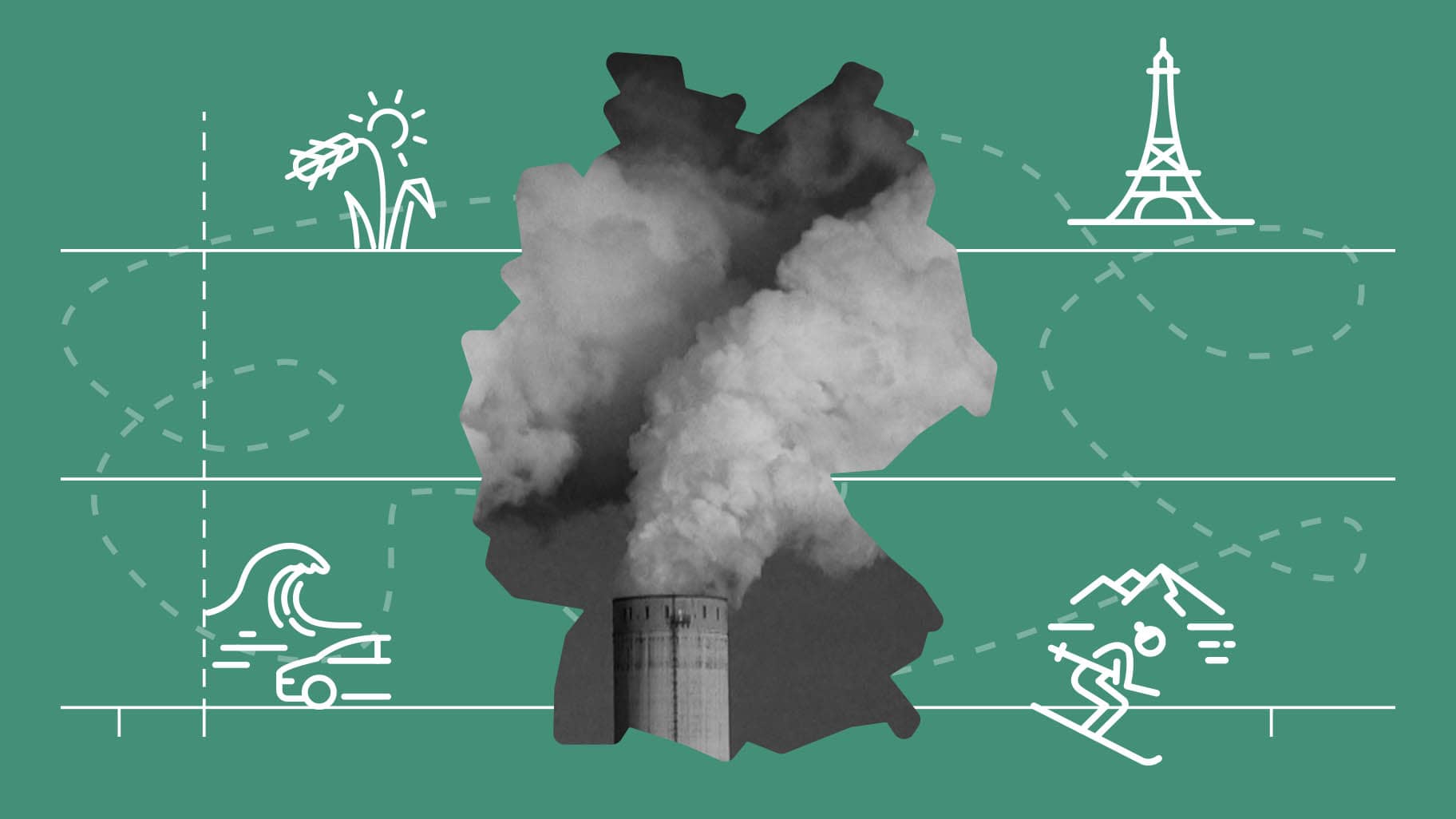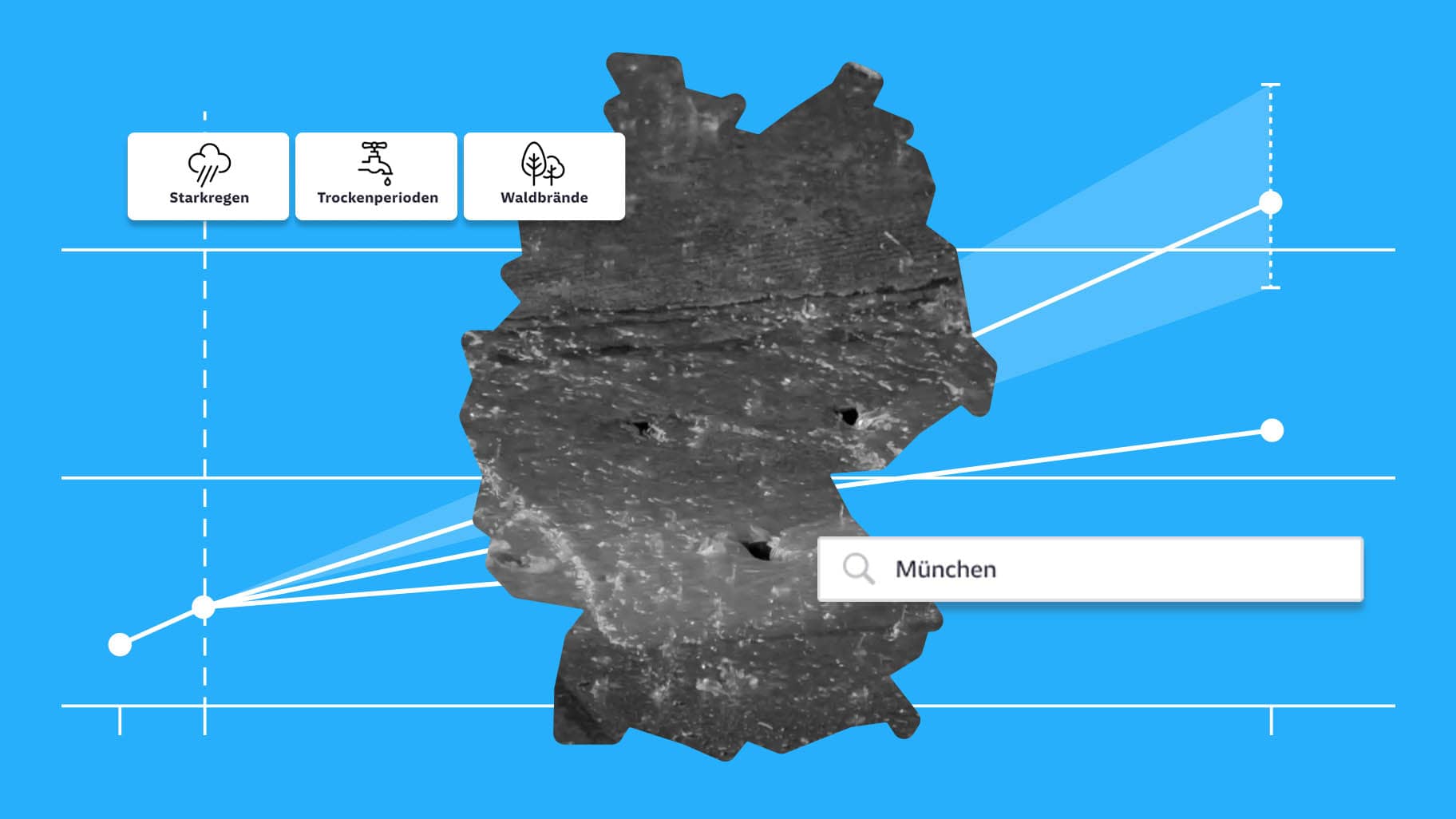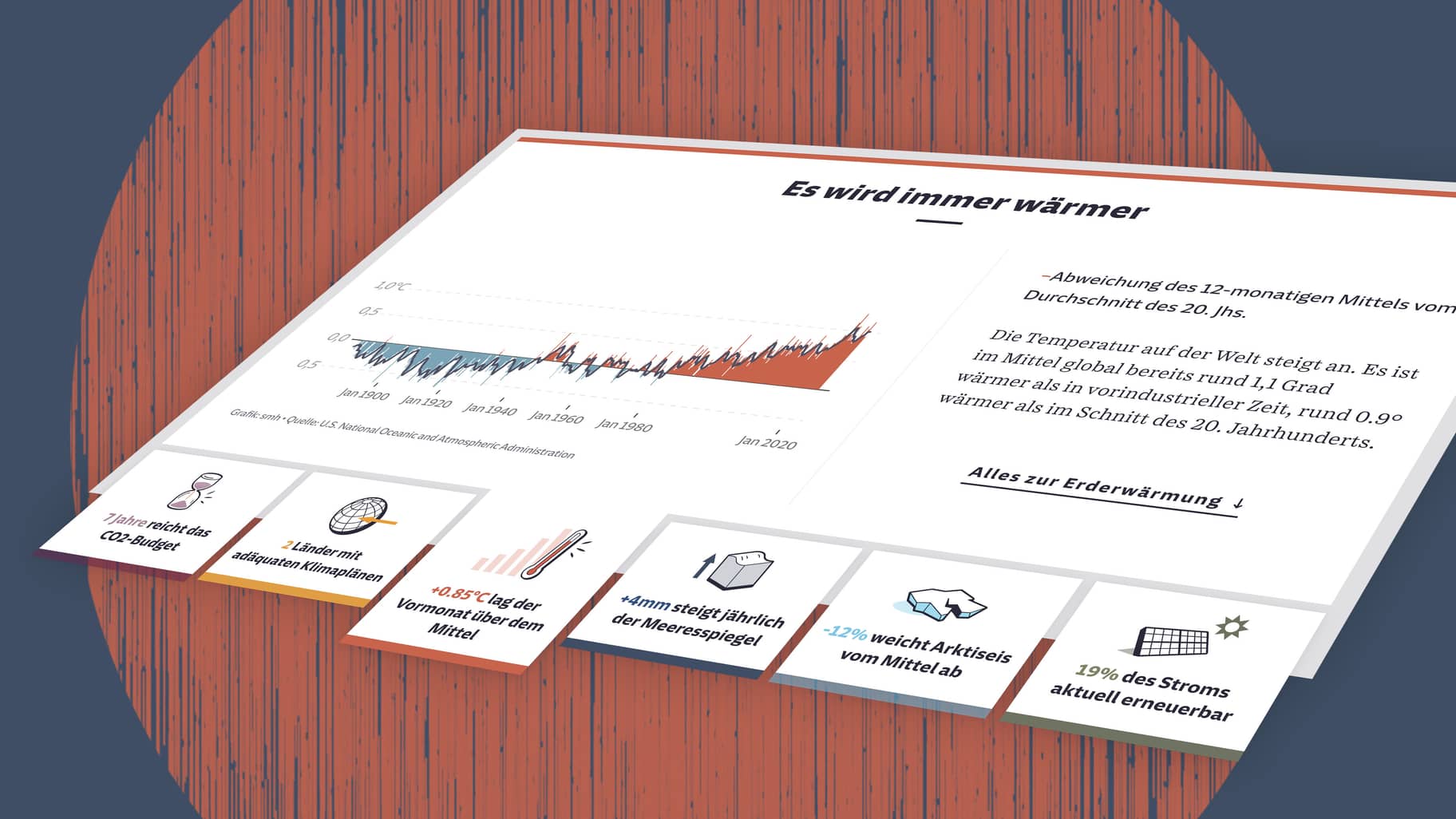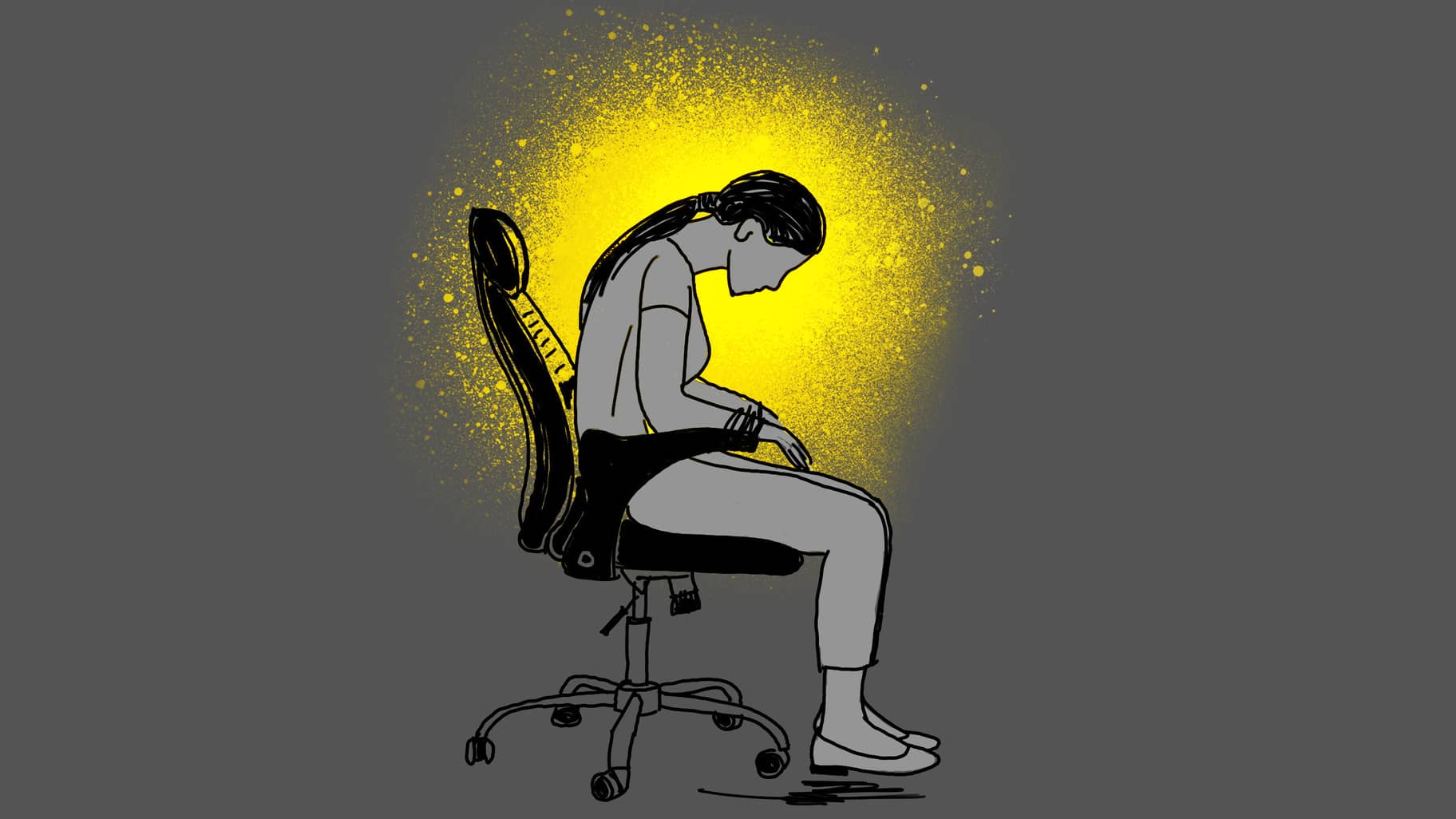The city is sweltering, the thermometer is approaching the 45-degree mark, and Thomas Weber is at his wits' end. The year is 2030, and it is the sixth drought year in a row. Now the Weber family is squatting in their stuffy three-and-a-half-room apartment in front of the two fans, which are doing little to combat the heat wave. To escape it, the Webers have planned a trip to their grandparents in a small town in Thuringia. The children are looking forward to a night at 20 degrees, finally sleeping properly again. Even though the Thuringian forest is heavily thinned and grayed after five years of drought, it's certainly a bit cooler. But then an embankment fire leads to a full closure of the highway, and many other roads are also damaged by the heat. Finally, Mr. Weber gets a call from his mother: We are being evacuated! A forest fire eats its way toward the small town.
The scene was devised by the think tank "Future Forum for Public Safety" to describe the possible consequences of a six-year drought in Germany. A far-fetched scenario? Not if you take current developments as a yardstick. For example, the population protection experts merely took their cue from a risk analysis by the German parliament, which described a six-year drought as a "justified worst-case scenario." When this analysis appeared in 2018, it had just been overtaken by reality, a drought the likes of which Central Europe had not experienced for a quarter of a millennium.

Balance of these three years of drought and heat from 2018 to 2020 in Germany alone: Five percent of forest area lost. Billions in damage to agriculture. 19,000 fatalities due to heat. Suddenly, this future doesn't seem so far away.
However, there is still often a feeling in this country that climate change will happen much later or far away, or both. In this focus, the SZ shows that this is not true. Global warming is affecting us personally, already now or very soon. Scientists can estimate many climate consequences with a high degree of certainty, even regionally and beyond 2030, up to the middle of the century.
For Germany, this means that by the middle of the century, the country will already have warmed by about 1.6 degrees compared to the end of the 20th century. By mid-century, most summers will be drier and hotter, winters milder and wetter, and precipitation will pelt down more frequently as destructive heavy rain. Heat waves could cost 90,000 lives a year across Europe by mid-century, according to the EU Commission, if appropriate adaptation measures are not taken. In the forests, the risk of fire is increasing, and new disease vectors such as the tiger mosquito are migrating. And of the 72,000 native animal and plant species, up to 30 percent could become extinct across Germany in the next few decades.

To grasp the magnitude of the changes that man has set in motion, one must briefly jump back to his beginnings. In the millennia before industrialization, the Earth's climate was exceptionally stable. A team of researchers from the University of Arizona recently conducted a comprehensive analysis of temperatures since the last ice age and concluded in the journal Nature that global surface temperatures changed by only about half a degree Celsius in the 9,000 years leading up to industrialization. More or less the entire human civilization developed in this climatic cradle: The first arable farmers were able to cultivate their fields, the first states and advanced civilizations emerged, and humanity grew to several billion. This security is now coming to an end, man has catapulted himself out of his niche, fueled by coal, oil and gas. Half a degree within 9000 years? That's how much the earth is currently warming in three decades.
What that will mean for Germany alone could fill entire books, such as "Germany 2050: How Climate Change Will Change Our Lives," which was published last year. At the same time, it is important to bear in mind the limitations of such forecasts. Physical parameters of the atmosphere and reasonably direct consequences for humans and nature can be modeled well, things like temperatures, sea levels, probabilities for extreme weather. How the changes actually affect everyday life also depends to a large extent on how people react, on their ability to adapt.
In the event of a period of heat lasting several years, many deaths could be prevented, for example, with air-conditioned rooms in old people's homes. In addition, a different way of dealing with the elderly is fundamentally required - for example, that neighbors regularly check on the lady living alone in the attic when it gets too hot in the summer. To prevent urban heat islands, cities would have to be transformed to provide more greenery, shade and water areas; less asphalt and also fewer cars driving on it, driving temperatures even higher with their waste heat. But these changes in infrastructure are long and arduous, as can be seen from how doggedly every single parking space is defended in many places. At the same time, some responses to climate impacts also carry the risk of further escalating the climate crisis. If, for example, more people in more countries than today were to come up with the idea of installing air conditioning systems to counter rising temperatures instead of climate protection, this would only drive up electricity consumption and thus emissions even further.
Much depends on how well society learns from past experience. It is now exactly one year since a flood disaster in Germany claimed 184 lives, 134 of them in the district of Ahrweiler in Rhineland-Palatinate, where masses of water devastated entire villages and destroyed or damaged 62 bridges alone. It is true that such events cannot be singularly attributed to global warming. What is certain, however, is that global warming makes such weather conditions more destructive, because warmer air can absorb more water, which then rains down in a shorter time. What was not demanded and admitted in the weeks after the flood: that such narrow valleys should be built less densely. That rivers like the Ahr need more natural areas like floodplains into which such heavy rain can flow. And today? There are reports that investors are holding on to several building projects in the floodplain of the Ahr and want to enforce exemptions. And only 34 of 9000 affected houses may not be rebuilt in the same place. If lessons are forgotten so quickly or not learned at all, it is not a good omen.
This forgetfulness is also an indication of the enormous psychological challenges and uncertainties that climate change poses. The climatic stability of past millennia brought with it a "predictable physical environment," experts at the McKinsey Global Institute said in a report on climate risks. That certainty that tomorrow's world will look something like today's is also necessary for much of human economic activity, whether it's building a house or investing in a company. A changing climate now requires us to adapt not only to a "new normal" full of risks, but also to constant change. A major task for the human brain, which in principle dislikes erratic changes and risks.
This explains why many simply tune out these changes. For example, still less than one in two residential buildings in Germany is insured against natural hazards. People are hardly aware of natural hazards. Only 12.5 million people have installed the warning app "Nina" from the Federal Office of Civil Protection and Disaster Assistance, less than one in five adults. Many municipalities still operate according to the maxim: "We won't be affected" when it comes to heavy rain. Or it has even come to: "It won't hit us again."

But the most serious climate risks could come to Germany from outside its borders. Extreme weather and high temperatures may already pose a growing threat in Central Europe, but compared to the hardships threatening other regions of the world, such as Africa or the Middle East, the consequences of global warming in this country may still be considered mild. A study commissioned by the Federal Environment Agency, for example, warns of a loss of raw material sources for German companies if weather extremes increase elsewhere in the world. After all, the Corona pandemic has just shown how badly a single natural disaster can disrupt supply chains. On the other hand, Germany, the world's leading exporter, is at risk of losing sales markets, for example if countries have less money to spend on German products because of the costs of climate change.
Of course, such economic consequences weigh little in the face of the human suffering that could lie ahead in many places. As yet, only about 0.8 percent of the world's land area has an average annual temperature of more than 29 degrees Celsius. A study in the journal PNAS warns that this hostile zone could grow to 19 percent by 2070 if climate change continues unchecked. Up to 3.5 billion people could thus be forced out of their climatic niche, and many would probably emigrate. In principle, it is an open question how the richer countries will react to such migratory movements. Nevertheless, it is not difficult to imagine how populists will try to capitalize on this. And, of course, if resources such as fresh water become scarce, this could, in the best case, lead to more cooperation and frugality - but equally to more conflicts or even wars over such scarce goods.
By mid-century, the various climate pathways - high emissions, medium emissions, low emissions - still differ little in their concrete effects. The climate system is inert, the atmosphere has simply changed too much already. It's like trying to stop a freight train at full speed without built-in brakes. Even if you don't add any more coal, it takes time for it to come to a standstill. In terms of the climate, this means that even if no more fossil fuels were burned from now on, global temperatures would continue to rise for several years. And it does not look like an emissions tabula rasa anyway. Many of the feared climate consequences for the middle of the century are therefore already certain.
But time will not stop in 2050. If emissions do not drop significantly by mid-century, climate change will also continue. The biggest source of uncertainty is how much greenhouse gas will still be released into the atmosphere. The amount of CO₂, methane and other greenhouse gases that humans emit from now on will mainly determine what the world looks like in the second half of the 21st century and beyond.
And against the dangers as they threaten then, one would possibly gladly exchange the risks from the year 2050.












